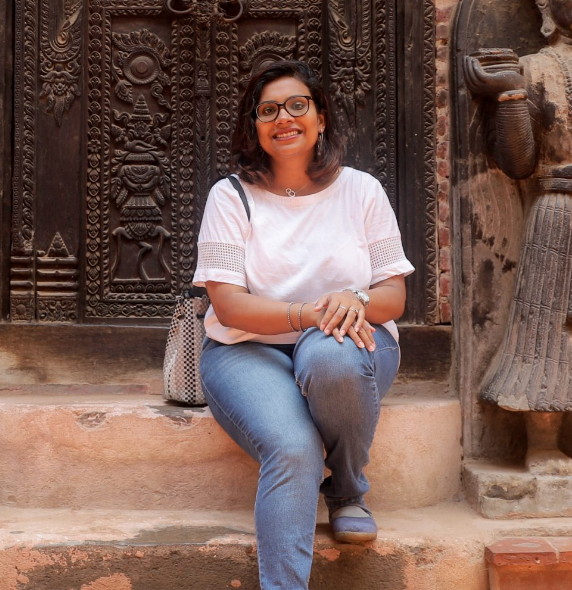

The Google of Spiti*
‘Knock! Knock’
We were all sitting in our room post-lunch, before setting out for Kibber, when Murli walked in. With him, was this tiny boy who had shining eyes and a mellow smile.
“Meet Singye. Yeh mujhe market mein mila”, (I met him at the market) Murli said in his not-so-good Hindi. But his expression had a zeal as if he had found something extremely precious.
“Isko Spiti k baare mein sab pata hai yaar, aur iski geography toh mere se bhi acchi hai”, (He knows everything about Spiti and his geography is far better than mine) Murli’s excitement knew no bounds.
By that time, Riju and Ilisha had already started chitchatting with Singye – our new Spitian friend, an eleven-year-old chap who was all set to become our guide for the rest of the day. Arnab and I were still in awe, trying to digest the lunch with the breath of fresh air that Singye had brought into the tiny room of Le Karze.
Singye, in no time, opened up as if he was just waiting to enlighten us with all that he knew about his land, his religion, and life. A boy studying in the 7th standard (that’s a higher grade considering his age), who has no access to the internet, knew much more about the history and geography of India than all 5 of us!
We decided to take him along with us, to Kibber and Singye agreed to the plan. “Main aapko bataunga Kibber aur Ki Monastery k baare mein”, (I’ll tell you stories of Kibber and Ki Monastery) Singye said, before Murli took him to his mother’s shop, to seek her permission. She runs a store selling woolen garments, right next to Sol Cafe in Kaza.
In the meanwhile, we decided how to fit Singye in our car, and Ashok Bhaiya, the one in charge of driving us to Kibber, was skeptical about taking him.
“Iski mummy isko dhundne ayegi, aur phir mujhe pareshaani hogi,” (His mother will come to look for him and I’ll be in trouble) he said in a concerned voice. We told him that his mother already knew that he was with us and after a little hassle, Ashok Bhaiya finally was convinced.
As the car hit the topsy-turvy mountain roads, Singye started telling us about Rangrik – the tiny village that was on the other side of the mountains. Rangrik has one of the biggest residential schools in Spiti District, the Munselling School, where Singye’s 17-year-old sister was a teacher.
“Meri didi waha se books laati hai, aur mujhe bohot saare kahaaniya batati hai” (My sister gets me books from there and tells me stories), he said.
I don’t know how much importance one gave to their geography lessons, but I’m sure of the fact that not much was taught to us in school about the Himalayas, about these parts of our country where people still live a life facing immense climatic hazards and places that hold such cultural richness.

Singye kept telling us about how the Himalayas were formed, millions of years ago, and how the marine objects of the Tethys Sea turned into fossils that can still be found in areas around Langza and Hikkim. We couldn’t stop asking questions to him and he, happily, kept clearing all our doubts. That morning itself, I met a few kids at Langza who showed me fossils but weren’t ready to give them to me. I wondered why! Singye said, “Yeh toh humara hai, aapko nehi de sakte” (This is ours, we can’t give it to you).
Riju, being keen about snow leopards, asked him if he had ever seen one, and he replied, “Haa, maine toh bohot baar dekha hai. Snow leopard ko Ibex pakadte huye bhi dekha hai” (Yes, I’ve seen them many times, I’ve also seen a snow leopard catching an Ibex). I could visualize the entire scene as he was narrating it, and then, I was a little jealous of Singye, knowing that I would never have a chance to see something like that!
We reached Kibber, and Singye met one of his classmates there. It was Gandhi Ji’s birthday (2nd October) and school was closed, so the kids were quite happy. Kalsang, the friend, rode his donkey and took a tour of the village like a king!
“Kalsang! Kalsang”, Singye called out. Kalsang stopped for a while, posed for a photo, and then, fled with the donkey! We had no clue whether he was scared of us or was it the donkey who was scared – but both of them vanished in no time!

Singye wanted to show us the Kibber Monastery, which was on another hill and we had to hike up a steep slope. Just a couple of minutes and he was halfway to the top, screaming at the top of his voice and asking us to come up quickly. “Hum tumhare tarha jaldi nehi aa sakte hai, hum toh buddhe ho gaye hai naa,” (We can’t walk as fast as you do, we are old, right) Riju said, trying to catch his breath. “Aap buddhe kaha ho, aap toh jawan ho,” (You aren’t old, you guys are all young) Singye exclaimed as he swept down the trail and decided to take us on an easier route!
Singye’s stories kept coming – one after another, endlessly. From the lives of Buddha to Guru Padmasambhava, tales from Mandi, Rewalsar to Lhalung, and of course, about his family, school, and teachers. To add to our surprise, he told us that his English teacher in school is an Everest climber, and not just that, this man has climbed five 8,000-meter peaks in total. Undoubtedly, he has become Singye’s favorite teacher, teaching him lessons beyond textbooks.
Our knowledge kept enhancing, as we got to know that the Spitian language is just used for speaking, and it doesn’t have a scripture. They use Pali or Tibetan while writing, although in school they are taught Devnagri nowadays, as many people from the valley dream of getting jobs in the Indian Army.
If you’ve ever been to the mountains, you must have noticed those colorful prayer flags, tied from one end of the road to the other, dancing to the tunes of the wind. All those prayer flags have Buddhist Mantras written on them – “Om Mani Padme Hum”.
Singye explained us to that the mantra signifies freedom from 5 evils – Pride, Lust, Ignorance, Desire, and Hatred. “Ahankar, ahankar toh sab mein hota hai naa, sabse buri cheez hai woh. Om Mani Padme Hum bolne se bhagwan aapko ahankar se mukt karenge,” (Pride, we all are suffering from it. Chanting the mantra will free you from the trap of ego) Singye said like a monk, showering us with his blessings.
By this time, we had all become his fans, and it seemed like we could keep listening to him.
When we reached Ki Monastery, it was already getting dark. The sun had started setting and cold wind pierced our bare body parts. Singye ran up the stairs. I looked at him and wondered, how God had made him so differently beautiful. While we were shivering despite having three layers of warm clothes, he only had a thin sweater and didn’t complain about the cold. I realized that the more we have, the more we’ll want. Singye had little, but he was happy with it.
The monks at Ki Monastery greeted us warmly, and they thought we had got a local guide with us. “Guide nehi hai, humara dost hai yeh,” (He’s not a guide, he’s a friend) I said when a monk continued asking questions to Singye in the Spitian language.
“Tumko Google pata hai?” (Do you know about Google) we asked Singye.
“Haa, pata hai – Global Organization Of Oriented Group Language Of Earth. Lekin humare yahan toh internet nehi chalta. Books acche hai, Google se bhi zyada”, (Yeah I know, but we don’t have access to the internet here. Books are better than Google) Singye replied in his ever-mature tone.
That day, he tore his slippers while showing us the nooks and corners of the Ki Monastery. Not even for once did he mention that he was having trouble walking after that. As we were heading towards Kaza, we planned to buy a pair of shoes for him. But sadly, in a small town at 15,000 ft, everything gets shut by 7 PM. Even his mother had closed her shop and headed back home.
It was time to bid him goodbye, and as I hugged him, I knew that he would meet hundreds of others like us, from the cities, who would fall in love with his uniqueness, but we shall not find another Singye.
In the cities where kids go to fancy schools, have all the access to the latest technology, and get the best guidance available, little ones like Singye are growing up beautifully amidst nature, learning from the oldest scriptures of the world and by being with teachers who have won over the mighty Himalayas.
It was some kind of magic that happened and we met him, only to realize how much we have missed out on learning in all these years.
Quite an obvious choice, Singye felt closer to Murli, his first friend from the group, and when we asked him to pose for a photo, his instant reply was, “Mujhe Murli Bhaiya k saath photo chahiye.” (I want a photo with Murli).

Of all the amazing things that those 9 days gifted us, Singye was one of the best. “The Google of Spiti” – as we named him, won our hearts and left a mark on our minds. As I always say, every person we meet has something to add to our story – if we wouldn’t have met him, there would have been so much about the valley that we would have missed out.
To put it more precisely, Singye added more value to our journey in the valley.
*The Spiti Valley is a cold desert mountain valley located high in the Himalayas mountains in the northeastern part of the Indian state of Himachal Pradesh. The name “Spiti” means “The Middle Land”, i.e. the land between Tibet and India. (Wikipedia)













